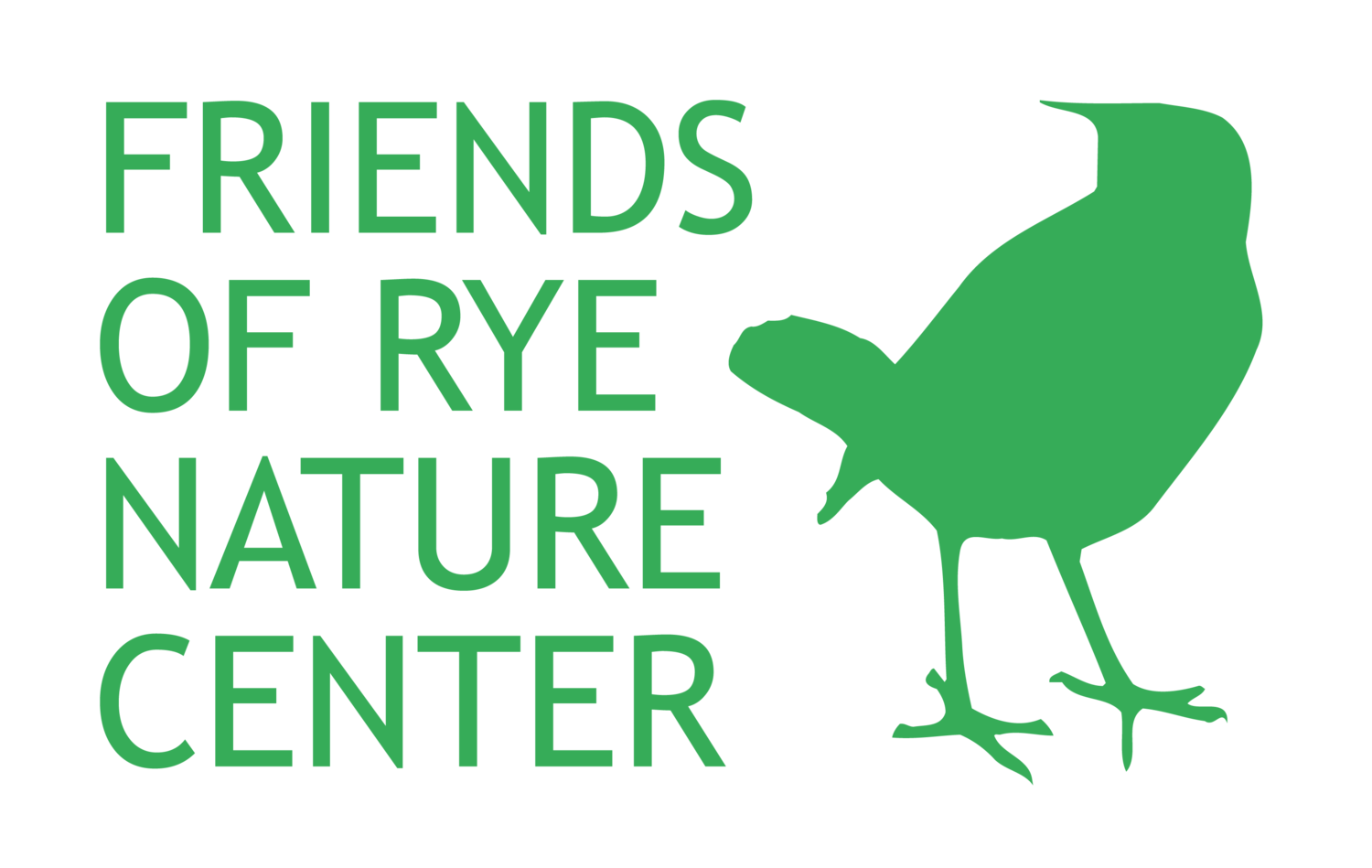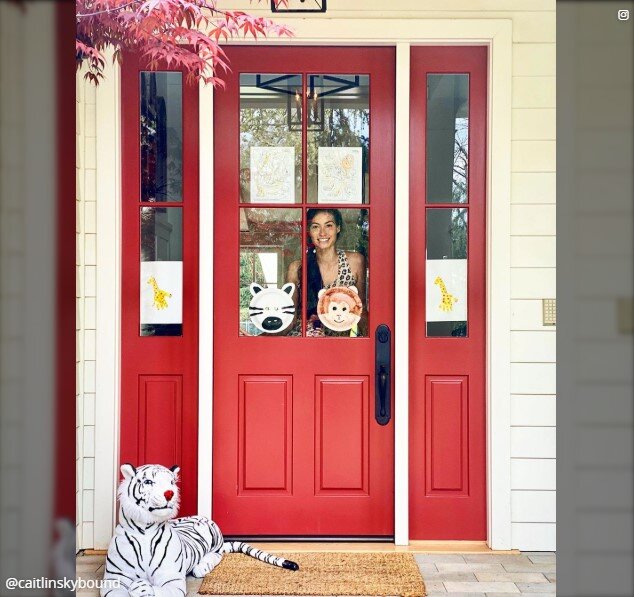If you work at a nature center or environmental education facility, then your mantra is "every day is Earth Day." When April 22 was first established as Earth Day in 1970 by grassroot environmentalist Denis Hayes and policy maker Senator Gaylord Nelson, the intention was for the rest of the world to acknowledge, reflect upon, and hopefully change their consumption patterns. Earth Day marked the birth of the environmental movement in the United States and the world soon followed. Today the Earth Day Network unites over 190 countries in a global effort to educate, celebrate, and, more importantly, take action.
Locally, FRNC and our community's other non-profits and citizen groups had been planning an all ages public event in recognition of the 50th anniversary of Earth Day. Our City Council graciously approved the use of the town green for this special afternoon that would have taken place this past Sunday, April 19.
Celebrating the 50th anniversary of Earth Day together while apart!
Although we aren't able to be together in the traditional sense to educate, celebrate, and take action, we can do our best to honor this 50th Anniversary together while apart. We ask that you recognize your place in this community effort by displaying the Rye Celebrates Together Earth Day Logo in your window and on social media today. Some of the activities that were planned for you on April 19 are listed below and we hope that you will take time today and every day to put them into practice. We hope that you will join us and make our mantra yours: "every day is Earth Day."
Share how you're celebrating by tagging us on Facebook and Instagram @ryenaturecenter! We look forward to being able to collaborate with our community partners in the future.
Games & Activities
1. Read your favorite nature book
Enjoy this virtual story time with two of our naturalists!
The Earth Gives More by Sue Feliess
Read by Henry
The Lorax by Dr. Seuss
Read by Kris
2. Recycling Relay Race
Gather various items and have a race to see who can sort them correctly the fastest.
Materials:
Recyclable items of various materials (cans, paper, bottles, etc.) We discourage using glass because it is fragile and races can get exciting.
Trash items (snack pack wrappers,
Compostable items (fruits and vegetable scraps, bread, etc.)
(Optional) Items you can reuse or repurpose. See what creative ways your children come up with to reuse items.
Category signs. Download ours or make your own.
Another fun game to play with your recyclables is Bottle Bowling. All you need is 10 bottles to serve as your bowling pins and a ball. You know the rest!
3. Nature scavenger hunt & optional hike
See how many of these natural items you can find in your backyard! You can also take a hike and see what you discover. Remember to adhere to social distancing guidelines on the trails. Click here for full scavenger hunt.
4. StickS & stones (tic-tac-toe)
Source: Education.com
A classic battle between two natural opponents! All you need is four sticks long enough to make a grid, 6 natural items to be your ‘X’, and 6 natural items to be your ‘O’. Twigs, wood chips, rocks, and fallen leaves or petals make great pieces, but you can make just about anything work.
5. Find a sit spot - Listen, observe & enjoy!
Pick your favorite place. Do you like water? Find a nearby brook. Love bird watching? Pick an area with trees and bushes where you might find these feathered friends. Once you’ve chosen a location, go outside and, you guessed it, sit! Open up your senses - what do you see, hear, and smell? The longer you sit the more you notice. Listen for different sounds, which are natural and which are man made? What animals do you see nearby? How do the react when they see you? If you sit calmly for long enough, they may not even notice you’re there.
CRAFTS
6. Make an Upcycled craft
Create a toilet paper/paper towel tube desk organizer for your work from home or home learning station. Source: Design Improvised
There are countless ways to upcycle and repurpose items you no longer use or planned to throw away. With a few basic craft supplies and some imagination, old t-shirts, egg cartons, coffee cans, and, of course, toilet paper tubes can quickly transform into tote bags, desk organizers, and more. If you missed Amanda’s egg carton craft from last week, check it out here.
7. Help create a neighborhood safari!
Through NatGeo@Home, National Geographic is encouraging families to participate in “neighborhood safaris”. Children color a picture of their favorite animal and show it off to the community. Hang it in your window, on your mailbox, or in your car! More details, coloring pages, and inspiration can be found here.
Conservation at home
8. START COMPOSTING
Food waste is not trash, yet it accounts for as much as 30% of the garbage that is sent to landfills and incinerators. By composting food scraps, we gain the valuable resource of rich soil in which we can grow more plants, fruits, and vegetables. Composting also helps reduce the amount of greenhouse gases emitted from landfills. People who compost also see a difference in their habits - composting helps us become aware of how much food we buy vs. how much we really need, leading us to become more conscious consumers.
Step 1: Collect your food scraps in a pail on your counter top. For backyard composting stick to fruits, vegetables, egg shells, coffee grounds, and a modest amount of garden clippings. Avoid meat, dairy, and anything containing oils, fats, animal byproducts, or chemicals.
Step 2: Transfer the food scraps from your counter pail to an outdoor composter. An average household will fill their counter pail about 3-4 times per week.
If you live in the City of Rye, make sure you register for the Food Scrap Recycling Program. This commercial composting initiative accepts items that aren’t meant for backyard composting like meat and dairy, leaving you with virtually no food waste. If you don’t live in Rye, check with your town, many municipalities have similar programs.
9. Plant something new (AND NATIVE) in your garden
A praying mantis lurking on the goldenrod at the Rye Nature Center.
In addition to providing beautiful, scenic views, native plants and flowers provide food and shelter for local wildlife and pollinators. Foreign plants can disrupt the local food web and become pesky invasives. The best part about native plants is that because they are adapted to the area in where they grow, they are usually relatively low-maintenance.
If you’re not sure where to start, check out our short list of pollinator-friendly natives or consult the National Wildlife Federation’s Native Plant Finder.
10. take the healthy yard pledge and help create a Pollinator Pathway in Rye
Join the global Pollinator Pathway movement! Pollinators are essential to the environment and our sources of food. A pollinator pathway is series of continuous corridors that provide native plant habitats free of pesticides for butterflies, bees, hummingbirds, and other pollinating wildlife.
Take the Rye Healthy Yard pledge today!
Thank you to our community partners!
As organizations that care deeply about the future of our children, our community, and our planet, we have come together to celebrate Earth Day 2020 and our ongoing efforts to make Rye a more resilient, sustainable community.
Fifty years after the first Earth Day, the planet still faces many challenges. Working together we will succeed in building a better world and a brighter future for everyone.









